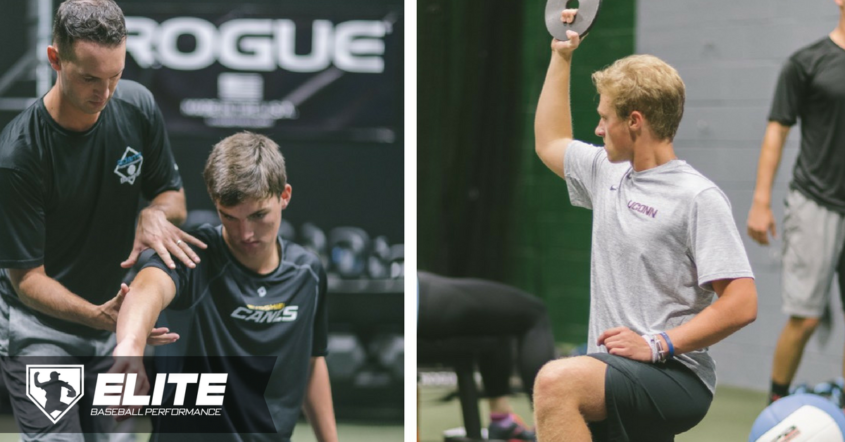Evidence-Based Inseason Arm Care for Baseball Players
Recently the American Sports Medicine Institute published some fantastic research identifying specific changes in pitchers that may increase risk of an arm injury during the baseball season.
The most important changes have been linked to range of motion in the throwing arm. At our facility, we identify three changes in measurement as red flags while in season: decreased shoulder flexion, decreased shoulder internal rotation and increasing shoulder external rotation.
We have adopted specific mobility and stability exercises as part of an arm care system that draws heavily on this research. I will outline how we progress through our most common exercises that drives the best results for players.
How to Prevent Loss of Shoulder Flexion
Pitchers will acquire a heavy workload on the lats and low back muscles during the year, especially at the start of the baseball season. Stiffness in these muscles will contribute to loss of shoulder flexion and the ability to fully reach overhead.
We have players start with lat soft tissue mobilization for 1-2 sets of 10, and then follow with lat isometric liftoffs for 1 set of 5 for 5 second holds.
How to Prevent Loss of Shoulder Internal Rotation
More people are now familiar with the concept of pitchers losing shoulder internal rotation from throwing.
This can happen for a variety of reasons, including chronic bony changes in mature throwers over time, and acute changes to the rotator cuff and trunk muscles in pitchers during the season.
This article will not detail the total motion concept, and if you are unfamiliar I would urge you to read articles by ASMI that are readily available online. Mike Reinold has an excellent article about GIRD and loss of internal rotation in baseball players.
We mandate that all players at our facility have a plan for pre- and post-throwing to prevent negative long-term changes in shoulder range of motion. Here you will see how we target the posterior shoulder to accomplish this.
We have players start with posterior shoulder mobilization for 1-2 sets of 10, and then follow with the cross-body rotation stretch for 1 set of 10.
How to Prevent Excessive Increase of Shoulder External Rotation
Rapid increases in shoulder external rotation have been linked with increased risk of injury in throwers. This change in external rotation is also correlated with throwing harder, so we should not be surprised by the link between the two. So how can we encourage our athletes to throw hard while reducing injury risk?
We use data from a recent ASMI weighted ball study that demonstrated an increase of more than 5 degrees of shoulder external rotation during a throwing program is correlated with a risk of arm injury.
Motor control of end-range external rotation and trunk position often decreases with workload and fatigue in our experience. As a result, we prescribe two of the following exercises to maintain motor control in the layback phase of throwing.
We have players start with half kneeling cuff stabilization for 2-3 sets of 3 for 5 second holds, and then follow with external rotation oscillations for 2-3 sets of 15.
The cuff stabilization drill allows the coach or clinician to progressively load the shoulder based on feel and comfort for each player.
There seems to be a gap in the baseball world between recommendations from research and real-world implementation with players. I hope this article will provide some ideas for fitness and medical providers to connect the dots and help reduce the epidemic of arm injuries currently plaguing baseball!
Kyle Adams
Latest posts by Kyle Adams (see all)
- Evidence-Based Inseason Arm Care for Baseball Players - April 17, 2018
- 3 Exercises to Improve Velocity in Tall Baseball Pitchers - September 19, 2017
- 3 Important Exercises Baseball Players Should Perform Inseason - March 28, 2017












Excellent. Thank you!